The SP runs very slow. When I look at execution plan - I can see that 83% of its cost goes to Nested Loops (Inner Join)

Is any chance to substitute it somehow?
Here is my SP
ALTER PROCEDURE [dbo].[EarningPlazaCommercial]
@State varchar(50),
@StartDate datetime,
@EndDate datetime,
@AsOfDate datetime,
@ClassCode nvarchar(max),
@Coverage varchar(100)
AS
BEGIN
SET NOCOUNT ON;
CREATE TABLE #PolicyNumbers (PolicyNumber varchar(50))
INSERT INTO #PolicyNumbers SELECT PolicyNumber FROM tblClassCodesPlazaCommercial T1
WHERE NOT EXISTS (
SELECT 1 FROM tblClassCodesPlazaCommercial T2
WHERE T1.PolicyNumber = T2.PolicyNumber
AND ClassCode IN
(SELECT * FROM [dbo].[StringOfStringsToTable](@ClassCode,','))
)
CREATE CLUSTERED INDEX IDX_C_PolicyNumbers_PolicyNumber ON #PolicyNumbers(PolicyNumber)
; WITH Earned_to_date AS (
SELECT Cast(@AsOfDate AS DATE) AS Earned_to_date
), policy_data AS (
SELECT
PolicyNumber
, Cast(PolicyEffectiveDate AS DATE) AS PolicyEffectiveDate
, Cast(PolicyExpirationDate AS DATE) AS PolicyExpirationDate
, WrittenPremium
FROM PlazaInsuranceWPDataSet pid
WHERE NOT EXISTS (SELECT PolicyNumber FROM #PolicyNumbers pn WHERE pn.PolicyNumber = pid.PolicyNumber)
AND State IN (SELECT * FROM [dbo].[StringOfStringsToTable](@State,','))
AND Coverage IN (SELECT * FROM [dbo].[StringOfStringsToTable](@Coverage,','))
)
...
Here I am adding my full query for Stored Procedure:
ALTER PROCEDURE [dbo].[EarningPlazaCommercial]
@State varchar(50),
@StartDate datetime,
@EndDate datetime,
@AsOfDate datetime,
@ClassCode nvarchar(max),
@Coverage varchar(100)
AS
BEGIN
SET NOCOUNT ON;
CREATE TABLE #PolicyNumbers (PolicyNumber varchar(50))
INSERT INTO #PolicyNumbers SELECT PolicyNumber FROM tblClassCodesPlazaCommercial T1
WHERE NOT EXISTS (
SELECT 1 FROM tblClassCodesPlazaCommercial T2
WHERE T1.PolicyNumber = T2.PolicyNumber
AND ClassCode IN
(SELECT * FROM [dbo].[StringOfStringsToTable](@ClassCode,','))
)
CREATE CLUSTERED INDEX IDX_C_PolicyNumbers_PolicyNumber ON #PolicyNumbers(PolicyNumber)
; WITH Earned_to_date AS (
SELECT Cast(@AsOfDate AS DATE) AS Earned_to_date
--SELECT @AsOfDate AS Earned_to_date
), policy_data AS (
SELECT
PolicyNumber
, Cast(PolicyEffectiveDate AS DATE) AS PolicyEffectiveDate
, Cast(PolicyExpirationDate AS DATE) AS PolicyExpirationDate
, WrittenPremium
--, State
FROM PlazaInsuranceWPDataSet pid
WHERE NOT EXISTS (SELECT PolicyNumber FROM #PolicyNumbers pn WHERE pn.PolicyNumber = pid.PolicyNumber)
AND State IN (SELECT * FROM [dbo].[StringOfStringsToTable](@State,','))
AND Coverage IN (SELECT * FROM [dbo].[StringOfStringsToTable](@Coverage,','))
)
, digits AS (
SELECT digit
FROM (VALUES (0), (1), (2), (3), (4)
, (5), (6), (7), (8), (9)) AS z2 (digit)
), numbers AS (
SELECT 1000 * d4.digit + 100 * d3.digit + 10 * d2.digit + d1.digit AS number
FROM digits AS d1
CROSS JOIN digits AS d2
CROSS JOIN digits AS d3
CROSS JOIN digits AS d4
), calendar AS (
SELECT
DateAdd(month, number, '1753-01-01') AS month_of
, DateAdd(month, number, '1753-02-01') AS month_after
FROM numbers
), policy_dates AS (
SELECT
PolicyNumber
, CASE
WHEN month_of < PolicyEffectiveDate THEN PolicyEffectiveDate
ELSE month_of
END AS StartRiskMonth
, CASE
WHEN PolicyExpirationDate < month_after THEN PolicyExpirationDate
WHEN Earned_to_date.Earned_to_date < month_after THEN Earned_to_date
ELSE month_after
END AS EndRiskMonth
, DateDiff(day, PolicyEffectiveDate, PolicyExpirationDate) AS policy_days
, WrittenPremium
FROM policy_data
JOIN calendar
ON (policy_data.PolicyEffectiveDate < calendar.month_after
AND calendar.month_of < policy_data.PolicyExpirationDate)
CROSS JOIN Earned_to_date
WHERE month_of < Earned_to_date
)
SELECT --PolicyEffectiveDate,
--PolicyExpirationDate,
--PolicyNumber,
Year(StartRiskMonth) as YearStartRisk,
Month(StartRiskMonth) as MonthStartRisk,
c.YearNum,c.MonthNum,
convert(varchar(7), StartRiskMonth, 120) as RiskMonth,
sum(WrittenPremium * DateDiff(day, StartRiskMonth, EndRiskMonth) / policy_days) as EarnedPremium
FROM tblCalendar c
LEFT JOIN policy_dates l ON c.YearNum=Year(l.StartRiskMonth) and c.MonthNum = Month(l.StartRiskMonth) AND l.StartRiskMonth BETWEEN @StartDate AND @EndDate
WHERE c.YearNum Not IN (2017) --and PolicyNumber = 'PACA1000191-00'
GROUP BY convert(varchar(7), StartRiskMonth, 120),
Year(StartRiskMonth) , Month(StartRiskMonth),
c.YearNum,c.MonthNum--,PolicyNumber--,PolicyEffectiveDate,PolicyExpirationDate
ORDER BY c.YearNum,c.MonthNum
--convert(varchar(7), StartRiskMonth, 120)
DROP TABLE #PolicyNumbers
END
GO
Full actual execution plan from production link:


